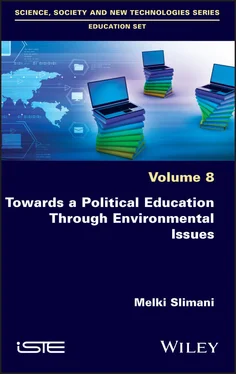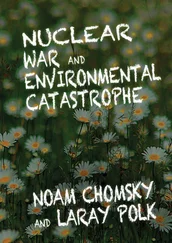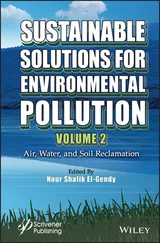1 Cover
2 Title Page Education Set coordinated by Angela Barthes and Anne-Laure Le Guern Volume 8
3 Copyright First published 2021 in Great Britain and the United States by ISTE Ltd and John Wiley & Sons, Inc. Apart from any fair dealing for the purposes of research or private study, or criticism or review, as permitted under the Copyright, Designs and Patents Act 1988, this publication may only be reproduced, stored or transmitted, in any form or by any means, with the prior permission in writing of the publishers, or in the case of reprographic reproduction in accordance with the terms and licenses issued by the CLA. Enquiries concerning reproduction outside these terms should be sent to the publishers at the undermentioned address: ISTE Ltd 27-37 St George’s Road London SW19 4EU UK www.iste.co.uk John Wiley & Sons, Inc. 111 River Street Hoboken, NJ 07030 USA www.wiley.com © ISTE Ltd 2021 The rights of Melki Slimani to be identified as the author of this work have been asserted by him in accordance with the Copyright, Designs and Patents Act 1988. Library of Congress Control Number: 2020951823 British Library Cataloguing-in-Publication Data A CIP record for this book is available from the British Library ISBN 978-1-78630-588-6
4 Foreword: Laying Down the Principles of Intentional Political Curricula for the Anthropocene World
5 Introduction
6 1 The Political Trend in Environmental Issues
1.1. Politics, the political and depoliticization 1.2. The political and the anti-political 1.3. Environmental and development issues (EDIs) between the political and anti-political or politics and depoliticization: what are the trends? 1.4. Conclusion
7 2 The Political Potential of Environmental Issues2.1. The regulatory categories of political life 2.2. The regulatory categories of political life in situations involving environmental and development issues 2.3. Conclusion
8 3 Political Learning and Socialization in Teaching Environmental Issues3.1. Educational purposes and projects: sociological, pedagogical and didactic approaches 3.2. Evolution of the contributions of didactic research for the educational purposes of socialization 3.3. Teaching of environmental and development issues and political learning: integrating socialization purposes 3.4. Conclusion
9 4 Methodological Considerations4.1. Case study methodology 4.2. Selection of case studies 4.3. Defining the analytical criteria 4.4. Procedure for data collection and analysis 4.5. Defining the research quality criteria
10 5 The Political within “Education for Sustainable Development Goals”5.1. Analysis of the Sustainable Development Goals (SDGs) 2030 5.2. Analysis of the content of “Education for SDGs”
11 6 The Political within the Tunisian Curriculum6.1. Secondary school curriculum analysis 6.2. Analysis of the undergraduate curriculum: the bachelor’s degree in environmental protection
12 Conclusion C.1. The “micro” level of the political/anti-political trend of EDIs C.2. The “meso” level of the political potential of EDIs C.3. The “macro” level of political learning in educational situations involving EDIs C.4. The political/anti-political trend and political potential of EDIs in the texts of the UN 2030 SDGs and the UNESCO “Education for SDGs 2030” C.5. The political/anti-political trend and political potential of EDIs between the prescribed curriculum, the potential curriculum and the produced secondary school curriculum C.6. The political/anti-political trend and political potential of EDIs between the 2009 prescribed university programs, the 2015 prescribed university programs and the produced curriculum for the environmental protection degree program C.7. The political potential and the potentialities for socialization in terms of political learning between the prescribed curriculum, the potential curriculum and the produced secondary school curriculum C.8. The political potential and the potentialities for socialization in terms of political learning between the 2009 university prescribed curricula, the 2015 prescribed curricula and the produced curriculum from the environmental protection degree
13 Appendices
14 Appendix 1: Interviews: Guides and Help Lists
15 Appendix 2: Report on Political Elements in the SDG 2030 Agenda and in the Contents of “Education for 2030 SDGs”
16 Appendix 3: Report on political elements in the Tunisian Curriculum
17 Glossary
18 References
19 Index
20 End User License Agreement
1 Chapter 3Figure 3.1. Moments of socialization in political education through the EDIs. Fo...Figure 3.2. Overview of citizen typologies (Johnson and Morris 2010, p. 85). For...
2 Chapter 4Figure 4.1. The EDIs in the 2030 SDGs Figure 4.2. Ideal type of political potential of EDIs. For a color version of th...Figure 4.3. Ideal type of potentialities for socialization in terms of political...Figure 4.4. Thematic analyses carried out regarding the contents of “Education f...Figure 4.5. Thematic analyses carried out on the content of the EDIs in the Tuni...Figure 4.6. Elements structuring the direct observation of sessions involving ED...Figure 4.7. Categories of interview questions and their supporting lists Figure 4.8. Methodological triangulation of research
3 Chapter 5Figure 5.1. The political potential of EDIs in the SDG 2030 agenda compared to t...Figure 5.2. The political potential of EDIs in UNESCO’s recommendations compared...Figure 5.3. The potentialities for socialization in terms of political learning ...
4 Chapter 6Figure 6.1. The political potential of EDIs in the prescribed secondary school c...Figure 6.2. The potential for socialization in terms of political learning in th...Figure 6.3. The political potential of EDIs in the potential secondary school cu...Figure 6.4. Potential for socialization in terms of political learning in the po...Figure 6.5. The political potential of EDIs in the produced curriculum of the Ec...Figure 6.6. The potential for socialization in terms of political learning in th...Figure 6.7. The political potential of EDIs in the 2009 university prescribed cu...Figure 6.8. The potential for socialization in terms of political learning in th...Figure 6.9. The political potential of EDIs in the 2015 university prescribed cu...Figure 6.10. The potential for socialization in terms of political learning in t...Figure 6.11. The political potential of EDIs in the produced curriculum from the...Figure 6.12. The potential for socialization in terms of political learning in t...
5 ConclusionFigure C.1. Political structuring in the SDGs. For a color version of this figur...Figure C.2. Political structuring in “Education for Sustainable Development Goal...Figure C.3. Political structuring in the prescribed Tunisian secondary school cu...Figure C.4. Political structuring in the potential curriculum of the Tunisian se...Figure C.5. Political structuring in the produced curriculum of 4th-year Economi...Figure C.6. Political structuring in the 2009 academic prescribed curricula. For...Figure C.7. Political structuring in the 2015 academic prescribed curricula. For...Figure C.8. Political structuring in the produced curriculum of the Environmenta...Figure C.9. Generation of the potential for democratic socialization in educatio...
1 Chapter 4Table 4.1. Analytical categories and examples of EDI indicators in educational c...Table 4.2. Examples of indicators of the political/anti-political trend in EDIs Table 4.3. Categories and indicators of the political potential of EDIs Table 4.4. Values associated with subcategories of the political potential of ED...Table 4.5. Categories and indicators for socialization in terms of political lea...Table 4.6. Values associated with the subcategories of potentialities for social...Table 4.7. Data collection methods and tools Table 4.8. Types of content analysis (Dany 2016, p. 101) Table 4.9. Grid of EDI collection in prescribed secondary education Table 4.10. Grid of EDI collection in prescribed higher education Table 4.11. Data on the number of observation sessions Table 4.12. Data on the number of interviews planned and completed
Читать дальше












